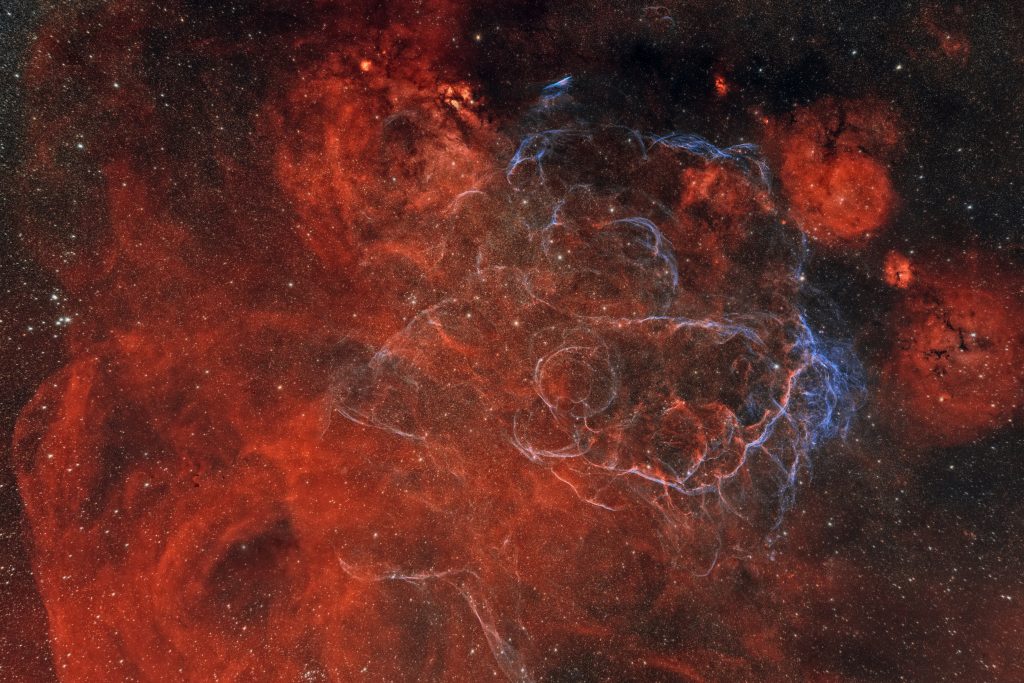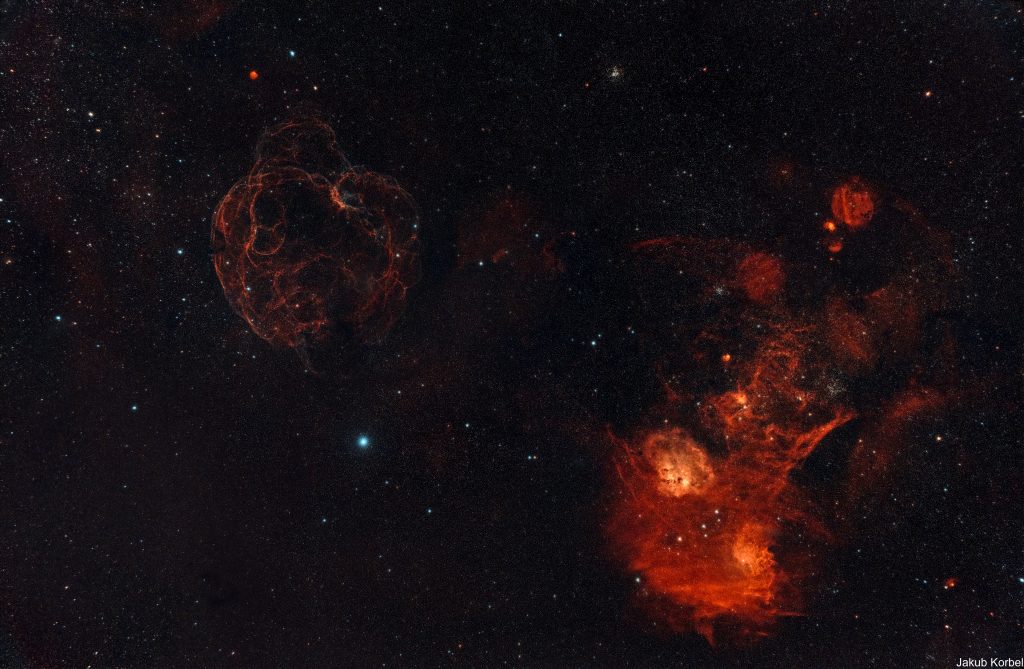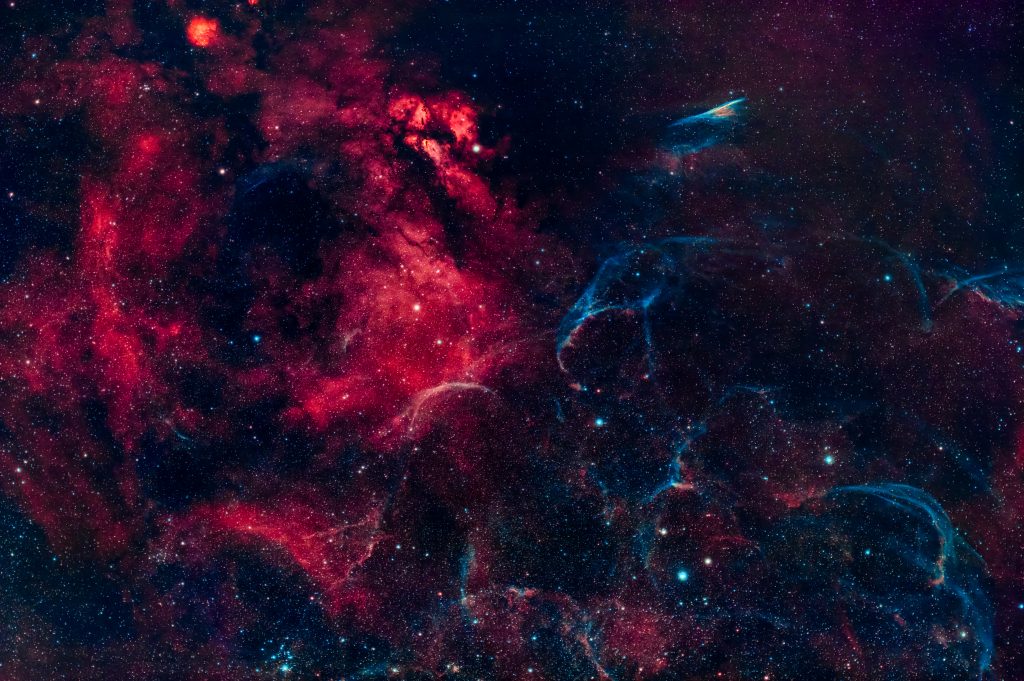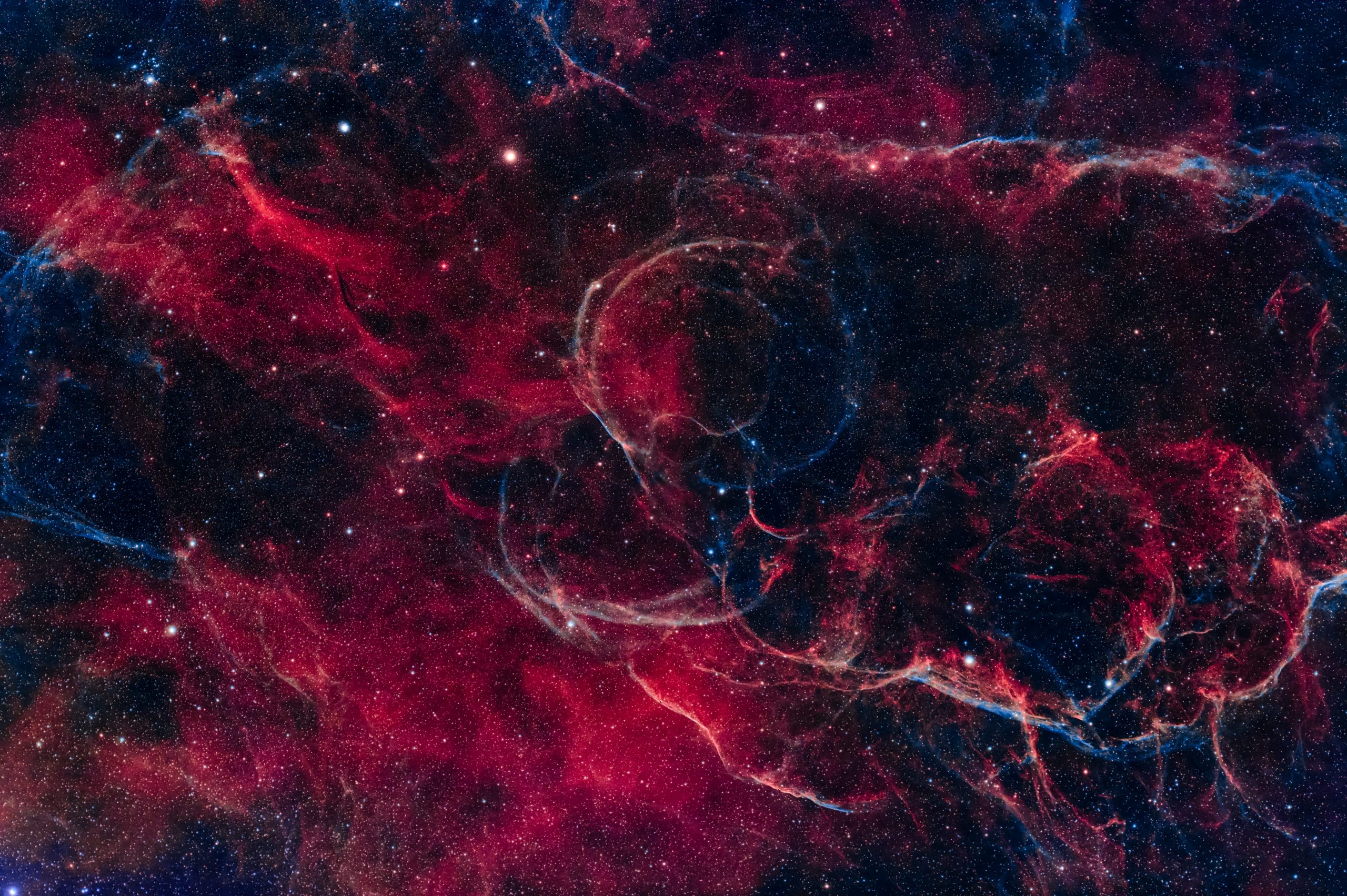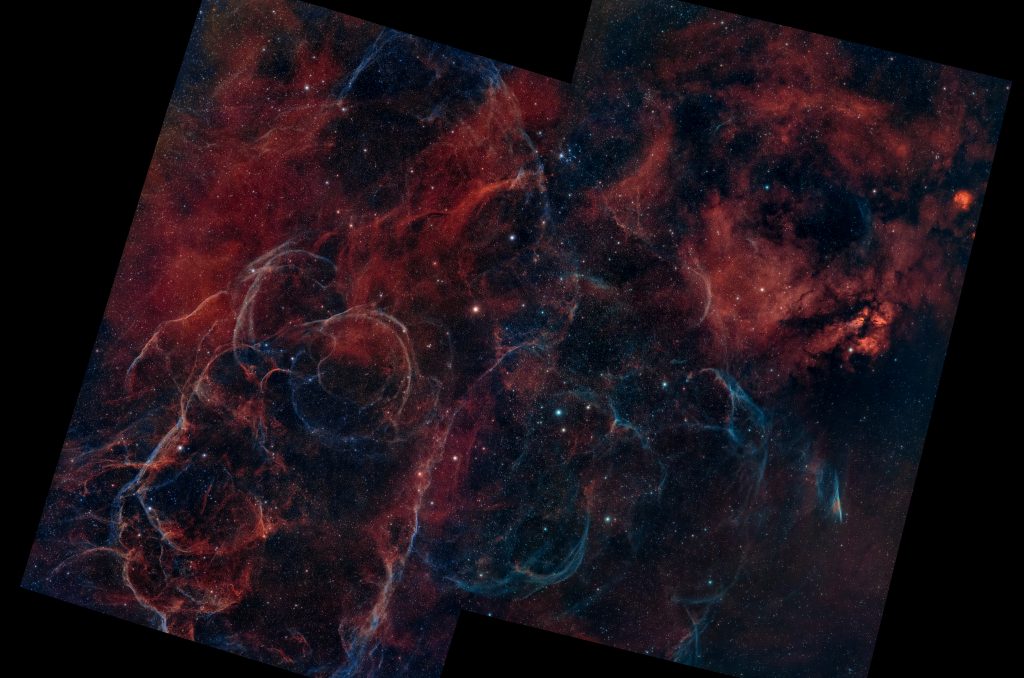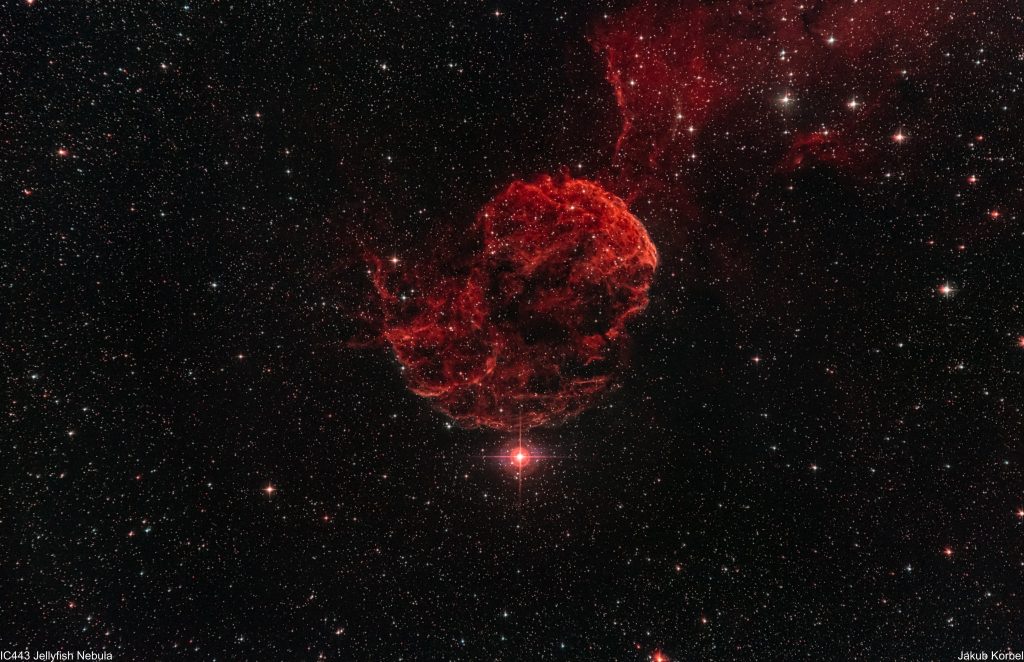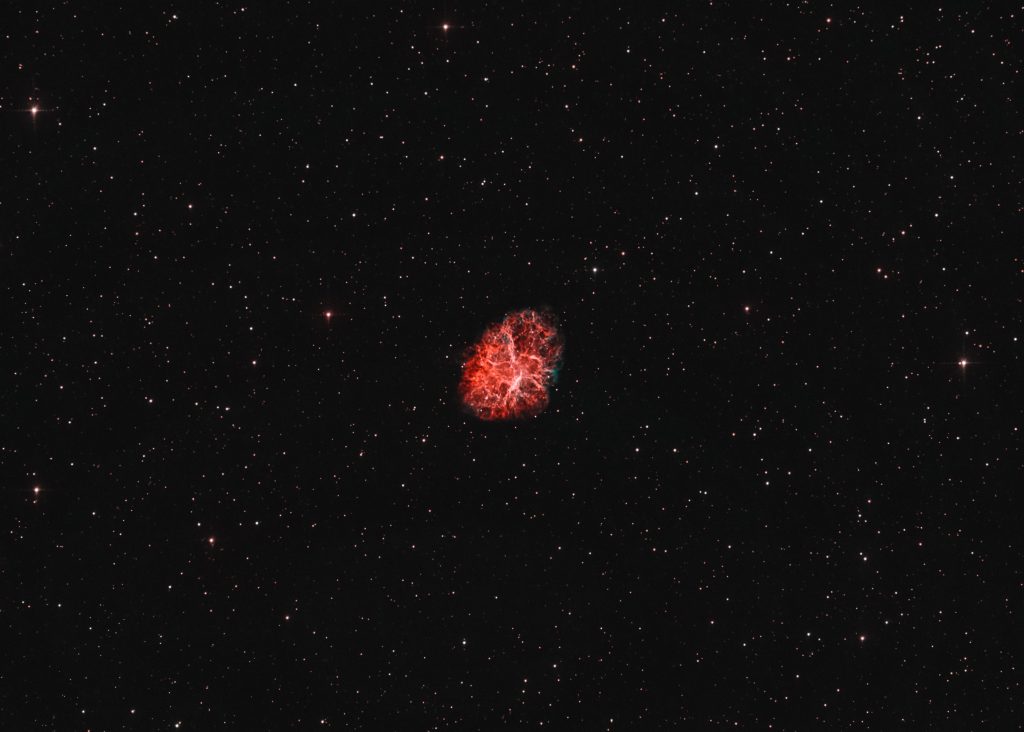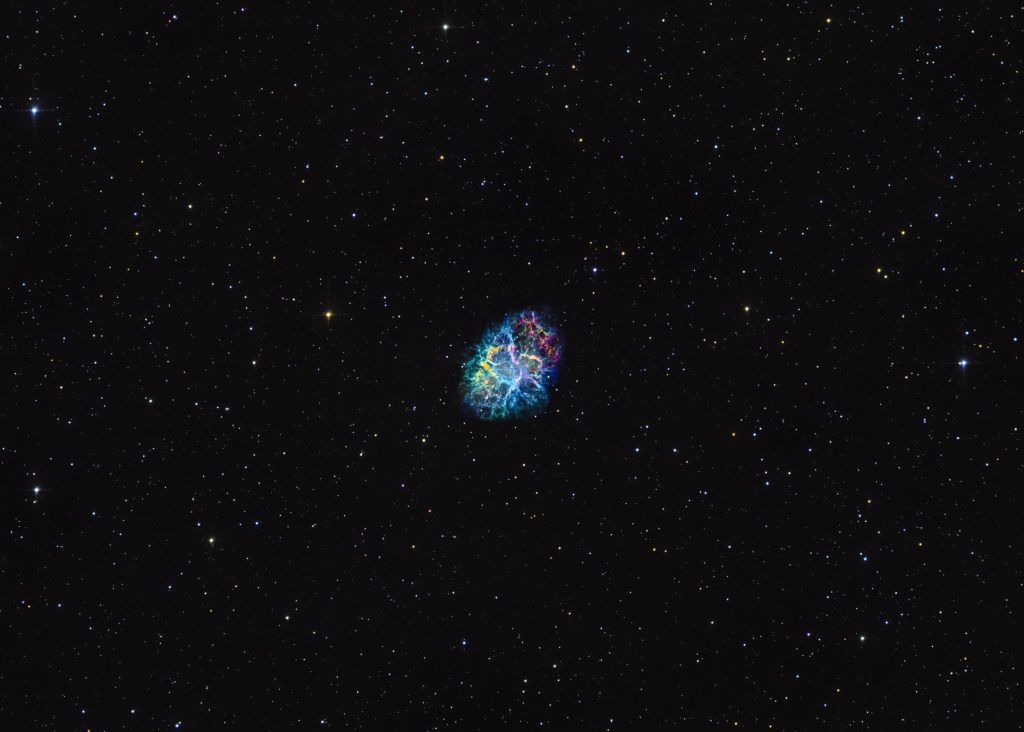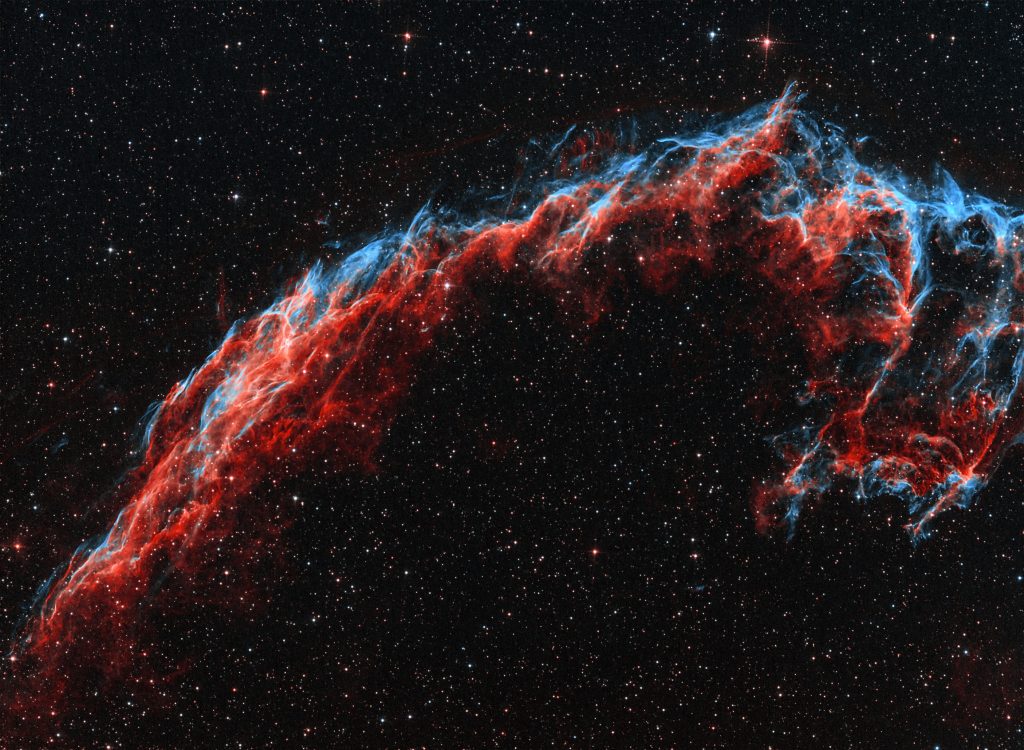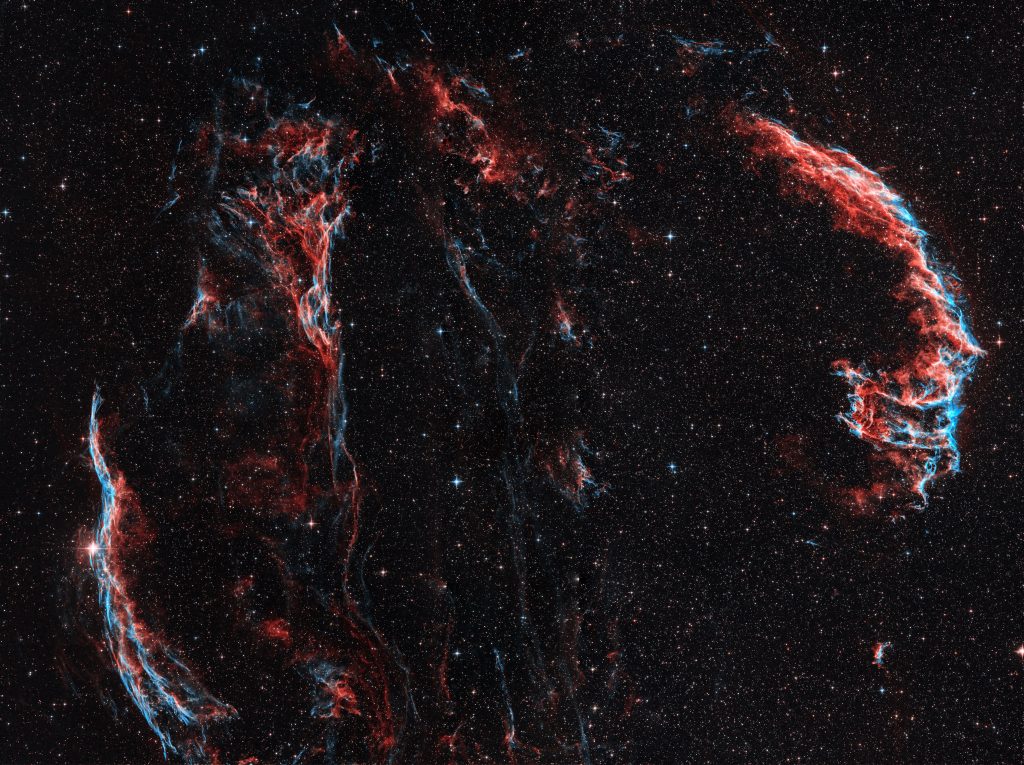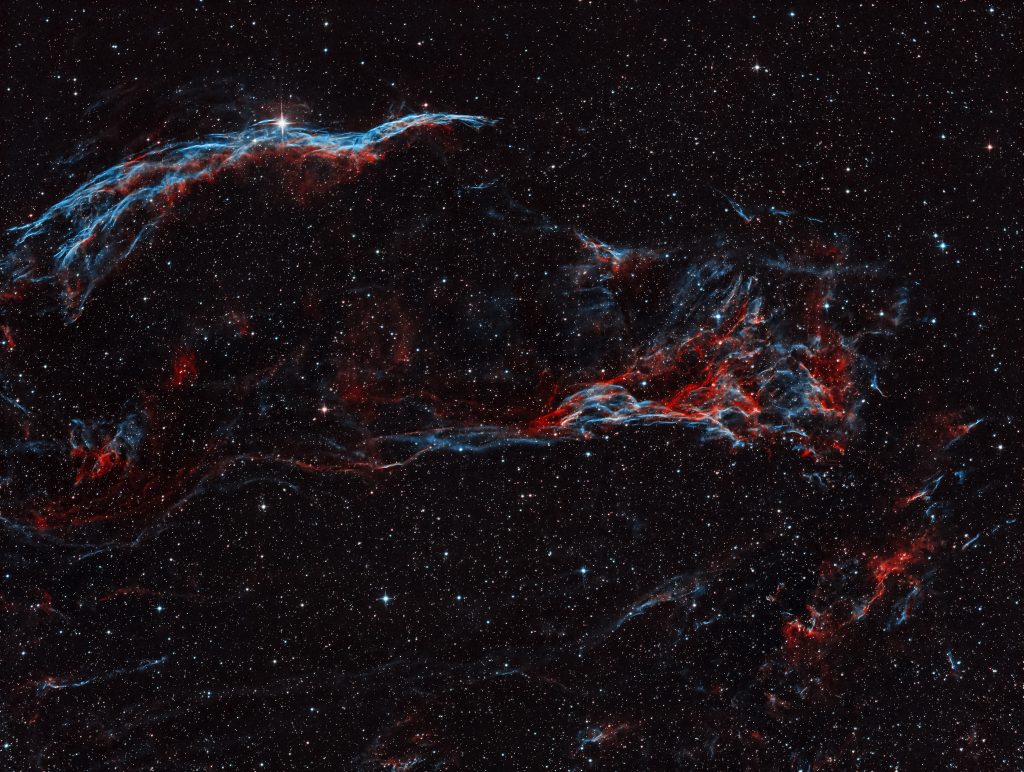In my previous project, where I created a mosaic of the Cygnus constellation, I discovered a faint supernova remnant near the star Albireo. Recognizing the significance of this finding, I committed to giving this celestial object more attention. I directed my Askar ACL telescope to these coordinates and gathered additional data over several hours.
Sh2-91, also identified as LBN 147, is a supernova remnant situated close to Albireo. Unlike its more well-known visual neighbor, the Veil Nebula, Sh2-91 is infrequently captured in deep-space photography. According to available literature, this nebula spans 230 light-years in diameter and is approximately 20 thousand years old.
Aware of the complexity of this target, I understood that an extensive integration time was necessary to highlight its intricate structures. Hence, I dedicated seven clear nights to capturing data for this deep-space object, accumulating nearly 14 hours of valuable data.
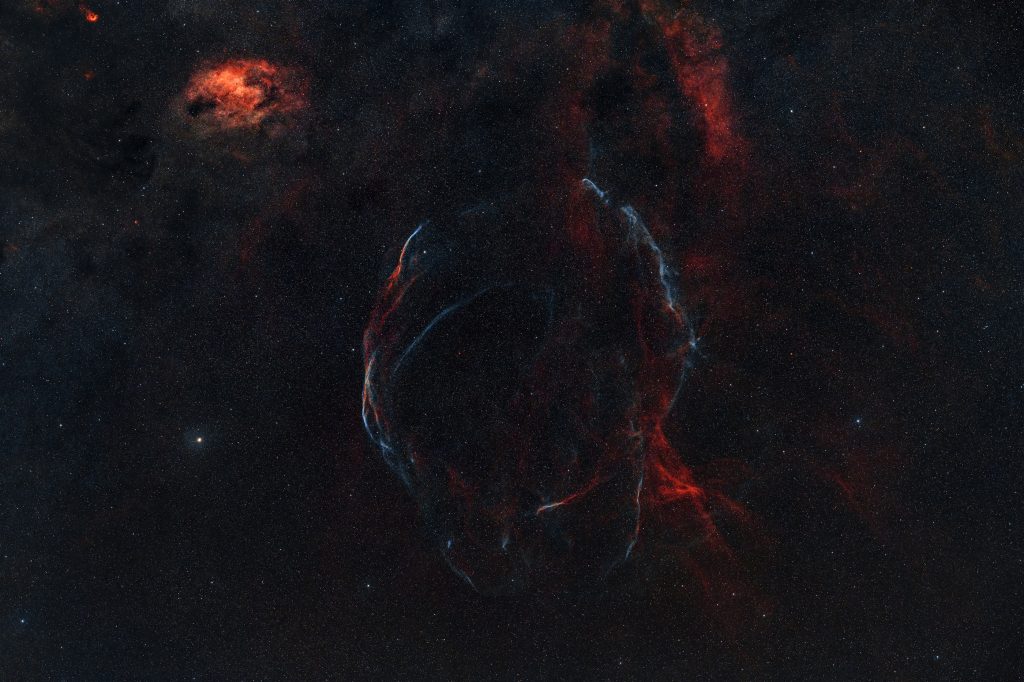
| Telescope | Askar ACL 200 F4 |
| Aperture | 50 mm |
| Focal length | 200 mm |
| Mount | Rainbow Astro RST 135 |
| Autoguiding | ZWO 178MM, QHY Mini Guide Scope |
| Camera | ZWO 6200MC @-10°C |
| Filters | Antlia ALP-T Dualband 5nm |
| Exposure | 167x300s, Gain 100, bin 1×1, |
| Date | 2023-09-15 2023-09-17 2023-09-19 2023-10-04 2023-10-06 2023-10-07 2023-10-08 |

